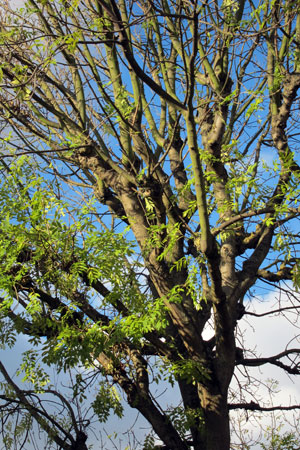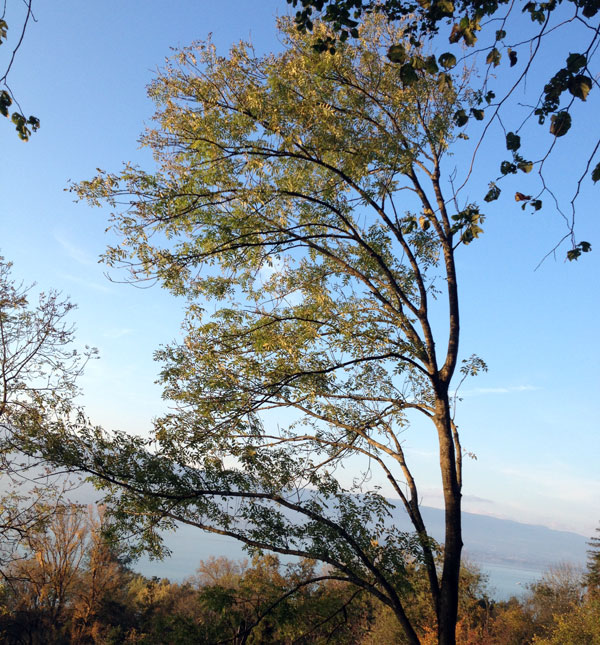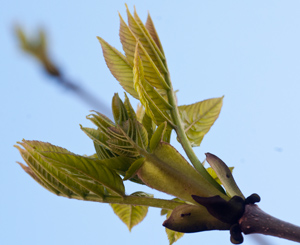Ash
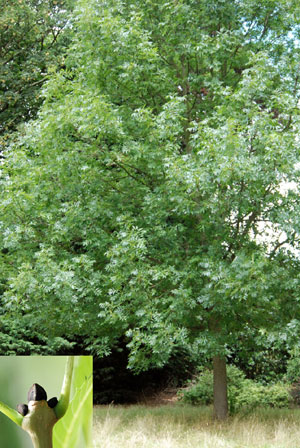
The trees of Ash (Fraxinus excelsior) are often very large trees, so that mature specimens may be 40-45 metres tall. Life span may be up to 400 years, though 200 years is more typical . The trees are often late coming into leaf, but they may be the first to lose leaves in autumn. The trees supports a hundred plus species of insects and mites, of which 29 are specific to Ash. In recent years, Ash has been affected by die back -this is caused by a fungus. Ash is related to the Olive, Jasmines and the Lilac, all members of the Oleaceae.
Leaf
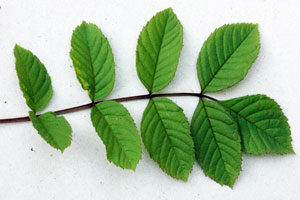
The leaves are arranged in pairs, sitting opposite to each other on the stem. The leaves are compound, with the leaflets in a pinnate arrangement. Each leaf has between 7–13 paired leaflets with coarsely serrated / toothed edges plus terminal leaflet. The leaflets are attached directly to the main stalk of the leaf.
Buds, Bark & Stem
The shoots are ‘stout’, greenish-grey in colour, the buds are particularly noticeable. They are black, with a ‘sooty’ or ‘velvety’ appearance. Sitting beneath the black buds are prominent leaf scars. The buds are sometimes compared to a Bishop’s Mitre in shape. The bark thickens with age and may have vertical fissures on old trees. The bark has silvery grey markings. On young shoots / stems, the lenticels (for gas exchange) are visible as pale cream 'flecks'.
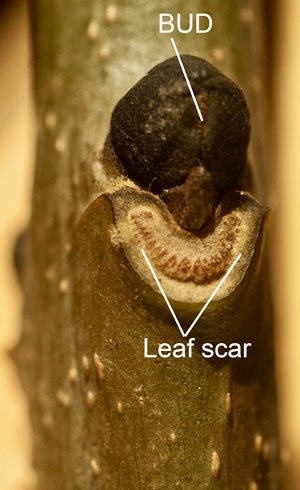
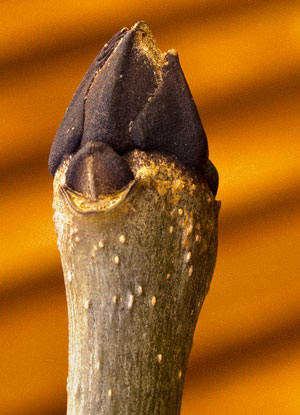
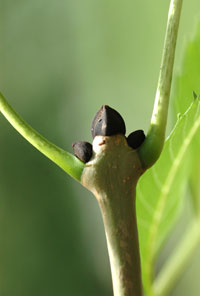
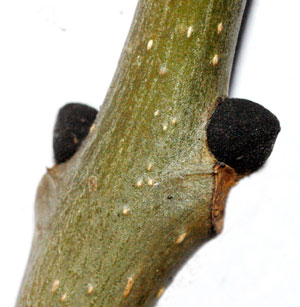
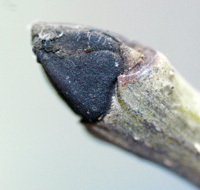
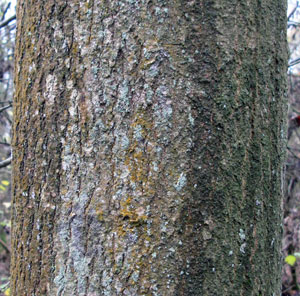
Flowers and Fruits
Ash trees are dioecious i.e. there are separate male and female trees, though hermaphrodites also occur. The flowers appear before the leaves and are borne in clusters near the tips of twigs - they are green and small, lacking petals. They develop (when fertilised) into 'ash keys'. A key is a seed with a wing (for wind dispersal), technically it is a samara. The images shows the dried keys still hanging from a tree in the following Spring.
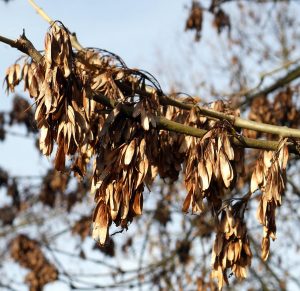
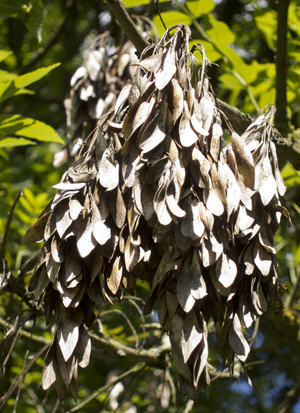
Ash Gallery
Ash dieback is caused by the fungus Hymenoscyphus fraxineus (previously referred to as Chalara fraxinea). Researchis ongoing into the genetics of resistance to the fungus. Examples of resistance have been found in some trees, but the resistance is not 'strong'. If a tree is infected then small necrotic (dying tissue) spots appear on stems and branches. These spots then enlarge forming cankers on the branches. The tree may show signs of wilting, coupled with early shedding of the leaves. The fungus is particularly damaging to younger trees, killing them within a growing season of the appearance of symptoms. Older trees take longer to succumb to infection.
